
A tactical shooter is a sub-genre of first- and third-person shooters, associated with using strategy, planning, and tactics in gameplay, as well as the realistic simulations of ballistics, firearm mechanics, physics, stamina, and low time to kill. Dating back to strategy games from the late 1980s, the genre first rose to prominence in the late 1990s with the releases of several well-received tactical shooters. The popularity of the genre saw a decline in the late 2000s as fast-paced "arcade"-like action shooters rose to prominence, it has seen a revitalization since the mid-2010s with the successful releases of several modern tactical shooters.

Contra: Hard Corps, released as Contra: The Hard Corps in Japan and Probotector in Europe and Australia, is a run and gun video game released by Konami for the Sega Genesis in 1994, making it the first game in the Contra series released for a Sega platform.

Metal Slug is a Japanese multimedia franchise and run and gun video game series originally created by Nazca Corporation before merging with SNK in 1996 after the completion of the first game in the series. Spin-off games include a third-person shooter to commemorate the 10th anniversary of the series and a tower defense game for the mobile platform. While originally created for Neo-Geo arcade machines hardware (MVS) and the Neo-Geo home game consoles (AES) hardware, the original games have also been ported to other consoles and mobile platforms throughout the years, with several later games created for various other platforms. The games focus on the Peregrine Falcon Squad, a small group of soldiers who fight against a rebel army, aliens, zombies, mummies and various other forces intent on world domination. Over the years since its debut, The franchise developed a small, but passionate cult following due to its unique visuals and slapstick humor.

Laser Invasion, released as Gun Sight (ガンサイト) in Japan, is a multi-genre first-person action game released by Konami for the Nintendo Entertainment System in 1991. The player takes control of a military operative who pilots an attack helicopter in order to infiltrate various enemy bases and fulfill his mission. The game supports the standard NES controller, as well as the NES Zapper light gun and the LaserScope, a voice-activated headset controller Konami released for the NES that was compatible with all light gun games released for the system. The American version of the game featured a rebate for the LaserScope in the instruction booklet.

Time Crisis is a first-person on-rails light gun shooter series of arcade video games by Namco, introduced in 1995. It is focused on the exploits of a fictional international intelligence agency who assigns its best agents to deal with a major threat by a hostile organisation, which has ranged from criminals, terrorists and hostile military outfits, and mostly take place within fictional locations across the world. The arcade series differed from other light gun shooters of its time by incorporating unique mechanics, including the ability to duck into cover to dodge attacks and reload the player's weapon, and forcing players to complete battles in each level within an allotted amount of time.

Metal Warriors is a side-scrolling action-platform run and gun video game developed by LucasArts and published by Konami exclusively for the Super Nintendo Entertainment System in North America in April 1995. It is often confused by many to be a direct sequel to Cybernator, which was created by NCS Corporation and released earlier in 1992 on the console. Set in the year 2102 where dictator Venkar Amon has waged a war against the United Earth Government for three years, players assume the role of lieutenant Stone from the titular freedom-fighting group taking control of several mecha suits in a last-ditch effort to overthrow the Dark Axis military force on Earth. Its gameplay mainly consists of action and shooting mixed with mission-based exploration using a main seven-button configuration.
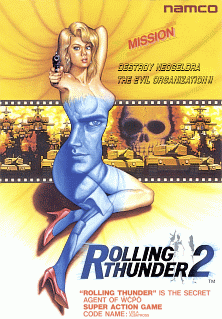
Rolling Thunder 2 is a run and gun arcade game developed and released by Namco for the Namco System 2 hardware in 1991. The game is the sequel to 1986's Rolling Thunder, retaining the same gameplay of its predecessor but adding cooperative gameplay for two players and improved graphics. Unlike the original, which was based in 1968, Rolling Thunder 2 has a more contemporary setting to go with its more futuristic design, as well as an optionally playable female character. A port for the Sega Genesis was released the same year. Both the Mega Drive port and the original arcade game were released for the Wii Virtual Console on December 4, 2007 and October 27, 2009 respectively.
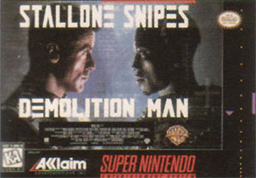
Demolition Man is a pair of action video games based on the film of the same name. Acclaim Entertainment published the 16-bit version, which features run and gun gameplay, for the Super NES, Sega Genesis and Sega CD. Virgin Interactive released a completely different game for the 3DO that combined several distinct gameplay styles. In both games, the player controls John Spartan, the main character from the film, as he attempts to find and defeat his nemesis, Simon Phoenix.

Code Name: Viper, known in Japan as Ningen Heiki Dead Fox, is an action-platform video game developed by Arc System Works and published by Capcom in 1990 for the Nintendo Entertainment System. The player takes control of a special forces operative who must combat a drug syndicate in South America.
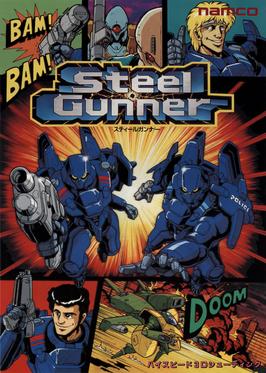
Steel Gunner is a 1990 first-person shooter arcade game developed and published by Namco. Players take control of Garcia and Cliff, a duo of police officers that are part of the Neo Arc police force, as they must use their powerful Gargoyle mecha suits to destroy the STURM terrorist organization, who have taken captive scientists Dr. Ryan and Dr. Ellis to create a world-ending superweapon. Gameplay revolves around using a crosshair to shoot down enemies and avoid harming civilians. It runs on the Namco System 2 Plus arcade hardware.

Elevator Action Returns, also known as Elevator Action II, is a 1994 run and gun video game developed for arcades and published by Taito. It is the sequel to Elevator Action (1983) with a grittier, more realistic setting. It retains the elevator-based gimmick from the original, but expands the gameplay system and replaces the spy motif with a new scenario involving a paramilitary team fighting against a terrorist group.

True Lies is a top-view run and gun video game based on the 1994 film True Lies. The game was developed by Beam Software and published by Acclaim Entertainment. Four different versions of the game were released for the Super Nintendo Entertainment System, Sega Genesis, Game Gear, and Game Boy. The home versions and portable versions are drastically different from each other, but have similar play mechanics.

The Punisher is a 1993 beat 'em up arcade game developed and released by Capcom. It stars the Marvel Comics' antihero the Punisher and co-stars S.H.I.E.L.D. agent Nick Fury as the second player's character as they embark on a mission to kill the crime lord the Kingpin and bring down his organization. While following the same general formula as Capcom's previous beat 'em ups, the game has a range of usable weapons and a comics-style presentation.

Pop'n TwinBee: Rainbow Bell Adventures is a side-scrolling platform game published and developed by Konami for the Super Nintendo Entertainment System. The game was originally released in Japan on 7 January 1994. Rainbow Bell Adventures is the first platformer in the TwinBee series, departuring from the vertically scrolling shooter genre.
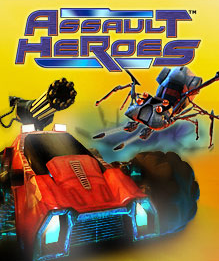
Assault Heroes is an arcade-style, top-down shooter video game developed by Wanako Games. The game has the player driving 4x4 vehicles, piloting speedboats, or proceeding on foot against enemy hordes. Players can play alone or co-operatively, including both online and offline 2-player co-operative modes.

MUSHA is a vertically scrolling shooter developed by Compile and released for the Sega Genesis in 1990. An entry in Compile's shooter series, Aleste, MUSHA places the player in the role of a flying mecha pilot who must destroy a large super intelligent computer threatening planet Earth. The game had a working title of Aleste 2 and originally featured a style similar to the first game, but this was changed to a more original Japanese aesthetic and speed metal soundtrack.

Gauntlet IV is a 1993 action video game developed by M2 and published by Tengen for the Sega Genesis. It includes a four player port of the original Gauntlet, as well other exclusive modes such as a new RPG Quest Mode and head to head battle mode, it was well received by critics.
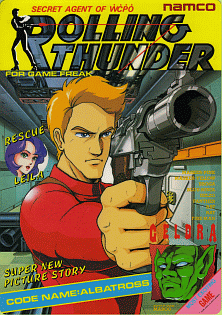
Rolling Thunder is a run and gun video game developed by Namco in Japan and Europe and released in 1986 as a coin-operated arcade video game using the Namco System 86 hardware. It was distributed in North America by Atari Games. The player takes control of a secret agent who must rescue his female partner from a terrorist organization. Rolling Thunder was a commercial success in arcades, and it was released for various home computer platforms in 1987 and the Nintendo Entertainment System in 1989. The original arcade game has been included in various classic game compilations as well. It influenced later arcade action franchises such as Shinobi and Time Crisis, which borrowed mechanics such as taking cover behind crates.

Jurassic Park: Rampage Edition is a 1994 side-scrolling video game developed by BlueSky Software and published by Sega for the Sega Genesis. It is the sequel to Sega's previous Jurassic Park video game, based on the film of the same name and also released for the Genesis. Jurassic Park: Rampage Edition is a revamped version of its predecessor, featuring similar gameplay with several changes, and a new story that continues from where the previous game ended.
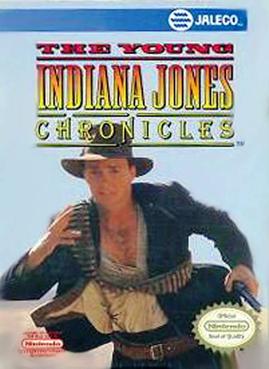
The Young Indiana Jones Chronicles is an action video game developed by Chris Gray Enterprises, Jaleco and published by Jaleco for the Nintendo Entertainment System (NES) in January 1993. It is based on the 1990s television series The Young Indiana Jones Chronicles.





















